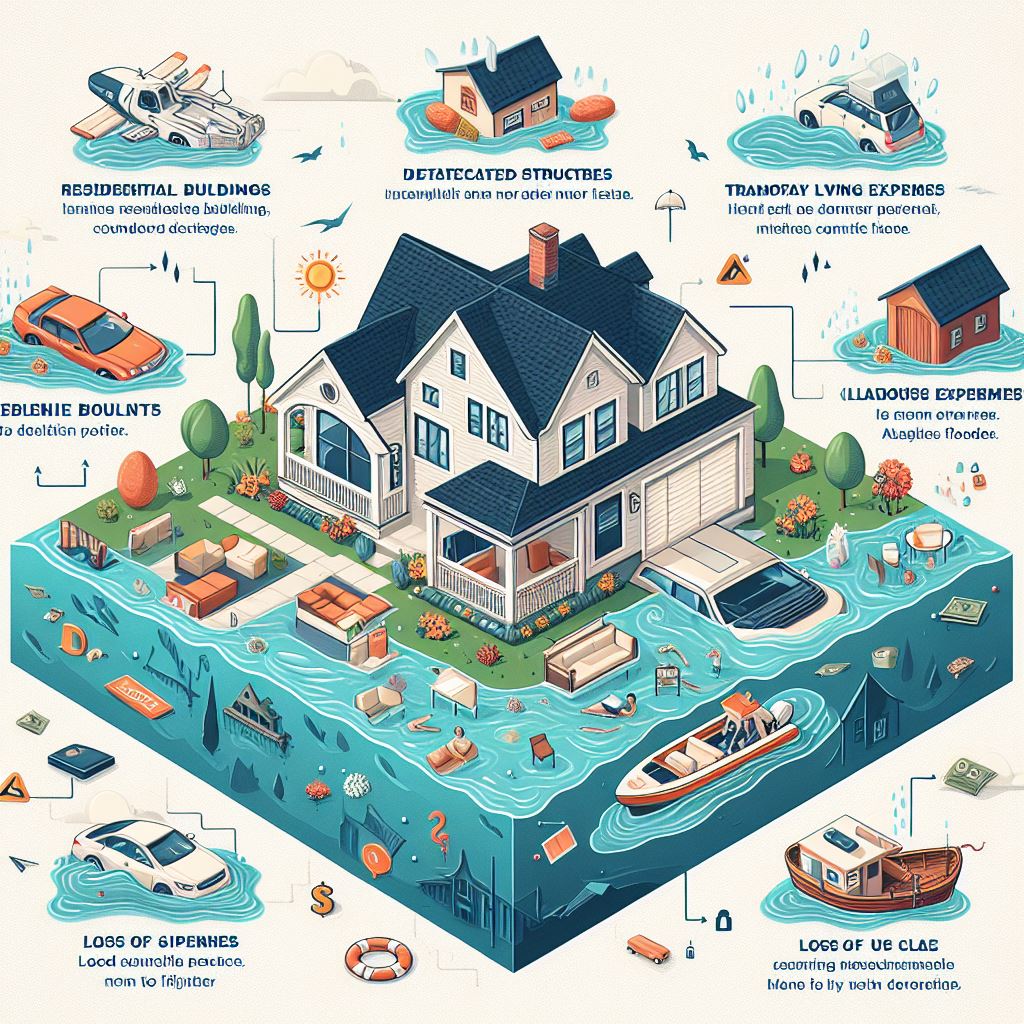What does flood insurance cover in Florida? Known as the Sunshine State, Florida attracts many people, but it deals with a big problem: floods. Floods happen often because Florida has a long coastline, many rivers, and lots of rain.
It’s important to know about flood risks and keep your property safe. Flood insurance is key to this. It helps you financially when floods damage your property.
This article talks about flood insurance in Florida. It explains what it covers, what it doesn’t cover, and the good and bad sides of having it.
Facts About Flood Insurance in FloridaWhat does flood insurance cover in Florida?
Flood insurance is a special policy made to protect your property from flood damage. It’s different from regular homeowner’s insurance, which usually doesn’t cover floods. In Florida, flood insurance covers two main things:
- Building Coverage
This part protects your home’s structure, like the foundation, walls, roof, and built-in fixtures such as cabinets or electrical systems. If floodwater harms these parts, flood insurance can pay for repairs or rebuilding, up to a certain limit.
- Contents Coverage
This covers your stuff inside the insured place that gets damaged by floods. Furniture, appliances, electronics, and clothes—losing these things can cost a lot of money, but flood insurance helps lessen that cost.
Knowing the highest amount the insurance will pay for both building and contents coverage is crucial.
Policies usually set limits for each category. For example, a policy might offer up to $250,000 for building coverage and $100,000 for contents coverage.
It’s important to work with your insurance agent to make sure you have enough coverage for your property and belongings.
What does flood insurance cover in Florida? Additional Coverages
Depending on the insurance company, some flood insurance policies might give you more coverage options. These could include:
- Increased Building Coverage: If your home is worth more than what the regular coverage offers, you can buy more coverage to make sure you’re fully protected.
- Loss of Use Coverage: This helps with extra living expenses if your home is unlivable because of flood damage while it’s being fixed.
- Flood Debris Removal: This pays for getting rid of flood debris from your property.
Flood Zones and Premiums
How much you pay for flood insurance depends a lot on what flood zone your property is in.
The National Flood Insurance Program (NFIP) divides places into different zones based on how likely they are to flood.
Properties in high-risk zones (also called Special Flood Hazard Areas or SFHAs) have much higher premiums than those in zones with less risk.
Preferred Risk Policy (PRP)
If your property is in a low or moderate flood risk area, you might qualify for a Preferred Risk Policy (PRP) from the NFIP. These policies usually cost less than regular flood insurance.
Exclusions in Flood Insurance
While flood insurance plays a critical role in safeguarding your property, it’s important to be aware of exclusions.
Here are some common exclusions to be mindful of:
- Flooding Caused by Sewer Backup: Damage caused by water backing up from drains or sewers is typically not covered by flood insurance.
- Surface Water Damage: Flooding caused by heavy rainfall that doesn’t reach the level of natural bodies of water (like rivers or lakes) might be excluded.
- Coastal Flooding: Depending on your specific policy and location, damage caused by a storm surge or wave action might not be covered.
- Mold Damage: While flood insurance covers the initial damage caused by floodwater, it typically doesn’t cover the subsequent growth of mold. This might require a separate mold remediation policy.
- Earth Movement: Damage caused by earthquakes or sinkholes isn’t covered by flood insurance.
The Pros and Cons of Flood Insurance in Florida
Benefits of Flood Insurance
- Financial Protection: Flood insurance gives you important financial help if there’s a flood. Fixing flood damage can cost a lot of money, and flood insurance helps ease that burden, possibly saving you from financial problems.
- Peace of Mind: Having flood insurance can give you a big sense of relief, especially since Florida often faces floods. It lets you concentrate on getting better instead of worrying about money.
- Mortgage Requirement: If your property is in a high-risk flood zone and you have a mortgage, your lender might need you to have flood insurance as part of the loan agreement.
Drawbacks of Flood Insurance
- Cost: Flood insurance can cost a lot, depending on where you live and how much coverage you want. For some people, especially those in high-risk areas, it might be too expensive. This could make them decide not to get flood insurance, even though it’s risky.
- Waiting Period: After you buy flood insurance, you usually have to wait 30 days before it starts covering you. So if there’s a flood during that time, your insurance won’t pay for the damage.
- Coverage Limits: Flood insurance policies have the most money they’ll pay for both your building and your stuff. Depending on how much your property is worth, these limits might not cover everything you need to fix or replace.
- Not Everything is Covered: Some things that cause floods might not be covered by your insurance. For example, damage from sewer backup, surface water floods, or coastal storms might not be included.
- Can’t Stop Floods: Flood insurance is only there to help with money after a flood. It won’t stop floods from happening. So, it’s still important to do things to lower the chances of a flood around your property.
